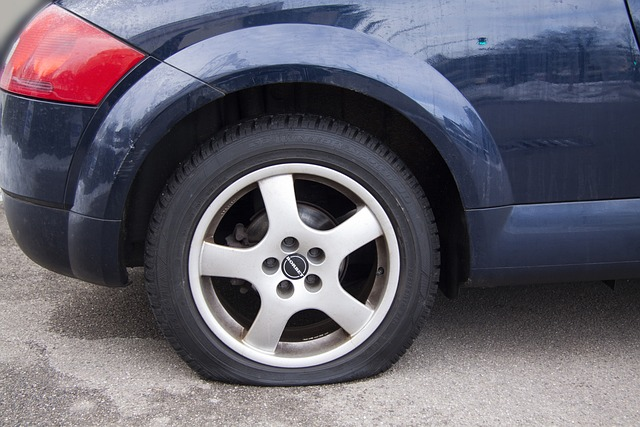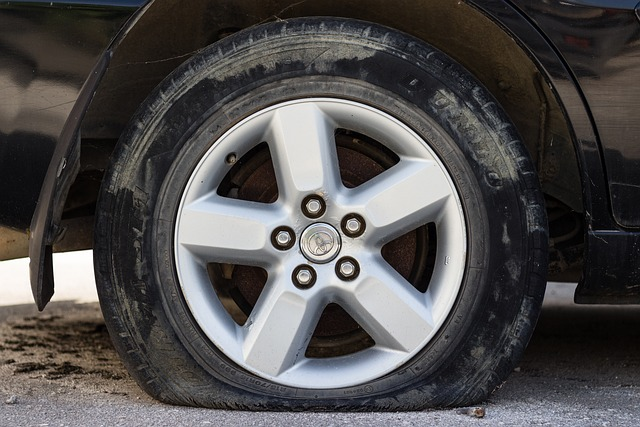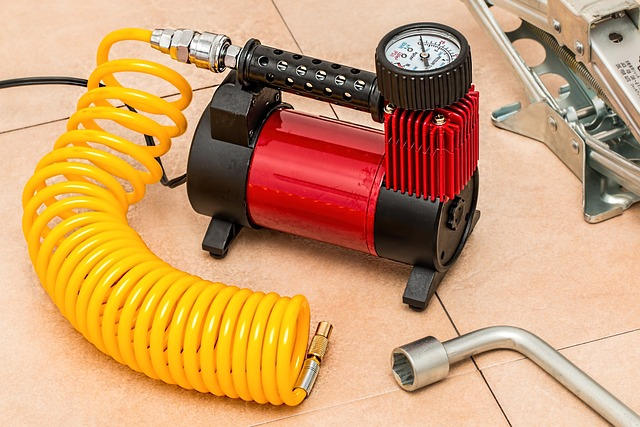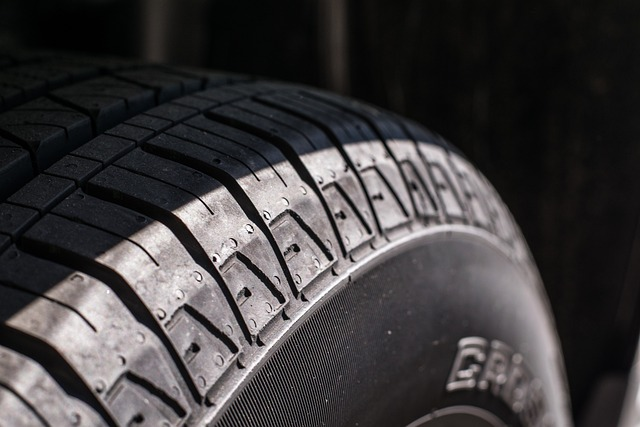
Have you ever been driving down the road and suddenly had one of your tires go flat? It’s an annoying inconvenience that can become a major problem if it happens often. But why do my tires keep going flat?
Knowing the most common reasons for tire deflation is key to preventing them from happening again in the future. In this article, we’ll take a look at the top ten reasons why your tires might be losing air pressure and how to avoid repeating these mistakes.
Click Here To Shop Tires In Clarksville!

Tire Pressure Overview
Tire pressure is a crucial factor to consider when it comes to the overall performance and longevity of your vehicle’s tires. Tire Pressure Monitoring Systems (TPMS) are designed to inform drivers if their car’s tire pressure falls below the manufacturer’s recommended level, helping avoid potential safety issues caused by low tire pressure.
The ideal tire inflation will vary depending on the type of vehicle you have; typically between 30-35 PSI for cars and light trucks. Every valve stem has a maximum air pressure rating printed on its side which should not be exceeded.
Regularly checking and maintaining correct tire pressures is essential for safe operation and maximizing your car’s performance capabilities. With that said, understanding what causes low tire pressures can help ensure they remain within an acceptable range at all times.
Click here schedule auto service in Clarksville today!

Causes Of Low Tire Pressure
There are many reasons why your tires may be going flat. Most of these causes relate to improper tire pressure or a slow leak in the tire itself. Let’s explore some of the most common causes and what you can do about them:
Improperly sealed Tire Bead: The bead, which is located around the circumference of the wheel rim, should create an airtight seal with the tire when properly installed. If this seal isn’t tight enough, then it could cause air to escape from your tires slowly over time.
Damaged Valve Stems: Your valve stems are responsible for letting air into and out of your tires when needed.
Low Air Pressure: It’s important to check your car’s recommended tire pressure at least once per month (or more often if you drive frequently).
It’s also possible for low air pressure to be caused by something else entirely – such as a puncture in the sidewall or even incorrect alignment causing one side of the vehicle to carry more weight than usual.

Improperly Inflated Tires
One of the main causes for flat tires is when tires are not properly inflated. Tire pressures should be checked regularly to ensure that they remain at optimal levels, otherwise you risk having a flat tire due to an overinflated tire or underinflated tire. Overinflated tires typically reduce your car’s fuel efficiency and can lead to uneven wear on the treads. This could result in a more hazardous ride as well as increased chances of getting a flat tire.
It’s important to always keep your tires properly inflated because it affects performance, safety, and even fuel economy of your vehicle. You should check your tire pressure every month with an accurate gauge and adjust accordingly based on manufacturer recommended settings.

Damaged Valve Stems
The improper inflation of tires is only one reason why your tires can lose air and may be going flat. Another common culprit for losing air in a tire is a damaged valve stem. The valve system on the side of your tire allows you to inflate or deflate it when needed, and if that’s not working correctly, then you’ll be losing air quickly. To check if this is the issue, grab some soapy water and put it around the valve stem area. If you see bubbles forming around them, then this could indicate an air leak from a defective valve stem.
If your tire pressure has been checked and all appears normal but you’re still having trouble with flat tires, take a closer look at the valve stems themselves. Make sure they are properly sealed and free of anycracks or damage that might be causing air leakage. You can also try replacing the valves altogether which should help resolve any issues related to air leakage caused by faulty components.
Defective Or Worn Tread
Flat tires can be caused by defective or worn tread. If the tire has lost air, it could be a sign of an issue with the rubber itself due to normal wear and tear. The cause may also come from a sharp object puncturing the tire, causing it to leak air and creating a flat spot on the surface.
Dry rot is another factor that can contribute to flat tires. This occurs when rubber becomes brittle over time or after prolonged exposure to sunlight, resulting in loss of traction or uneven pressure points within the tire.
Tire treads are designed to help protect your car’s wheels and provide better friction while driving – so if they’re badly worn down, it increases the risk of flats significantly.

Wheels Out Of Balance
A common cause of flat tires is wheels being out of balance. If a wheel bends or gets out of alignment, it can lead to uneven tire wear and eventually result in a flat tire. Hitting potholes and unexpected debris on the road can also throw your wheels off-balance, so be sure to drive carefully when encountering these obstacles.
To prevent this from happening, make sure your car’s suspension system is properly maintained and check for any signs of bent wheels regularly. Also avoid driving over large bumps or through heavy traffic areas as much as possible. Taking these precautions will help keep your tires inflated and extend their lifespan significantly.
Tire Damage From Impact
Tire punctures and other forms of tire damage are common causes of flat tires. Punctures can be caused by sharp objects such as nails, screws, or glass that may be found on the road. Potholes, curbs, and other types of road hazards can also cause punctures in tires. Bad road conditions like broken pavement can lead to a blowout or sidewall cut.
Leaks from valve cores and stem seals are another frequent source of flat tires. The core is responsible for controlling the flow of air into the tire through its valves, while the seal helps keep any air leakage out. Over time these components can become damaged due to age or wear-and-tear leading to slow air leaks causing low pressures in your car’s tires.
Leaking Valve Core/Stem Seal
The previous section discussed the potential damage to a tire caused by impact. Now, we will discuss how leaks in the valve core or stem seal can cause tires to go flat. This type of leak is less common than other causes, but it does happen.
One sign that this may be the culprit for your flat tire is if you recently had your tire inflated properly and then it goes flat shortly after. Another sign could be if the air pressure changes with temperature; as temperatures drop, air pressure drops too, resulting in an under-inflated tire. If either of these scenarios are true, it’s likely there’s a problem with the valve core or stem seal allowing air to escape from within the tire itself.
Click here to shop auto parts in Clarksville.
Punctures And Holes In Tire Sidewall
Punctures and holes in tire sidewalls are a common cause of flat tires. These punctures or holes can be caused by road debris, such as nails, screws, and sharp rocks; they may also occur due to contact with other objects or uneven roads like curbs or potholes.
Road Debris (nails & screws)
Repair the hole using an approved patch kit or replace the tire if severe damage has occurred.
Contact w/ Other Objects (curbs & potholes)
Check your tire pressure regularly.
Inspect for any sign of damage after hitting a curb or pothole.
Consider getting wheel alignment services if you hit a large object at high speed.
These types of tire problems usually result in one tire going flat, so it’s important to check all four tires on your car periodically for signs of wear and tear. If you find any punctures or holes in the sidewall of your tire(s), take action immediately to repair them before further damage occurs.
Wheel Alignment Issues
Wheel alignment issues are one of the major reasons for having flat tires. When a car’s wheels are out of alignment, it can cause extra space between the tire and wheel rim which leads to air leakage and eventually causes your tires to go flat.
Here is a list of 3 factors related to wheel alignment problems:
Worn Suspension Components
Poor Tire Pressure Maintenance
Neglecting Regular Wheel Alignment Checks
If you notice signs of irregular wear on your tires or feel unusual vibrations when driving, then chances are there might be something wrong with the way they’re aligned. Temperature-related fluctuations in pressure can further compound these issues if not addressed promptly. It’s important to keep up with regular maintenance checks so that you don’t have any unexpected surprises down the road!
Temperature-Related Fluctuations
Temperature-related fluctuations can cause tires to go flat. During colder weather, the air inside a tire contracts, causing the pressure in the tire to drop and leading to a flat tire. This is an especially common problem during winter months when temperatures often dip below freezing. In addition, drastic temperature changes from day to night may also have an effect on tire pressure due to rapid expansion or contraction of the air within the tire.
Driving Habits And Driving Conditions
Most drivers don’t realize that driving habits and conditions can have a huge impact on the condition of their tires. The most common cause for tires going flat is underinflation, which occurs when air pressure in each tire drops below its recommended level. This can happen due to inclement weather or because of frequent long-distance drives. It’s important for drivers to keep an eye on their tires’ pressure levels in order to prevent them from going flat.
Tire Age And Storage
The average driver may not think about their tires going flat, but it is a common issue that can lead to costly repairs and replacements. As the age of the tire increases, so does the likelihood of them going completely flat. The same goes for improper storage conditions such as extreme temperatures or prolonged exposure to sunlight. These factors can cause severe cases of flats in even newer tires.
Preventative Maintenance Tips
It’s perfectly normal for tires to go flat occasionally. After all, they take a lot of wear and tear on the roads – not only from us but also other drivers. That’s a major reason why it’s important to keep up with preventative maintenance tips that can help prolong the life of your tires and reduce the chances of them going flat.
Firstly, check tire pressure regularly by using an air gauge or via the dashboard display (if your car has one). Unevenly inflated tires can wreak havoc on vehicle performance, fuel economy, and safety.
Secondly, ensure proper wheel alignment is always maintained; this helps tires last longer as well as ride smoother.
Lastly, inspect tires visually every month or so to make sure there are no cuts, bulges, cracks or other abnormalities in the treads. If any problems arise it’s best to get them looked at right away before they become an even bigger issue – otherwise you may end up having extremely difficult replacing them sooner than expected.
With these preventive measures taken care of, you’ll be able to identify potential issues quickly and easily when they occur.
How To Identify A Flat Tire And What Caused It
Identifying the problem of why your tires keep going flat can be difficult. One way to start is by inspecting your tire walls for any signs of damage or puncture wounds, as those are often an indication that something has gone wrong and it needs to be addressed.
In order to diagnose what may be causing flat tires, it’s important to remember these key steps:
Inspect both sides of each tire wall.
Measure your tire pressure periodically.
Check all parts related to inflation (e.g., valve stems).
Examine the treads carefully for abnormalities.
Conclusion
It’s important to remember that flat tires can be extremely dangerous and should always be taken seriously. Taking the time to inspect your vehicle and tires regularly, as well as understanding how best to store them when not in use is essential for keeping you safe on the road.




